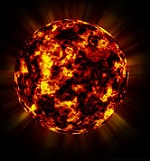The planet had been in the grip of a worldwide pandemic.
People in every country were in the throes of mask wearing, social distancing, mass testing and periods of self-isolation. So many aspects of the pandemic were robbing people of their normal everyday life, such as capacity restrictions for venues and events, like private gatherings, concerts, sporting games, and weddings. All of this, together with the ongoing maintenance of contact registers, borders being controlled and from time to time closed and restrictions on international travel. These were all things that did not sit well or come naturally to most of the world’s inhabitants. In many cases these precautions were not being taken, either because people couldn’t or wouldn’t. Meantime, vaccines had be developed and were reaching billions, while the virus had been spreading and killing millions. Doses of the vaccine were being produced in huge numbers and injections of it were given in order to protect the people, but there were cases where the transmitting of the virus was exponentially outpacing the numbers being vaccinated. As time went on, new variants of the virus, that were even more transmissible than the original strain, were adding to the battle to control its spread.
The first four years of the pandemic saw the world struggle against the spread, with a constant effort to reduce the numbers of people being infected. It was around this time, despite the vaccination levels of the world’s population being seen as high, that statistics being gathered internationally by governments and medical institutions around the world were indicating that the dwindling population of the planet was moving towards a point of no return. Meetings being held by world leaders and government representatives had become common, with statistical modelling being carried out in an attempt to predict future events.
It was during the sixth year that the declining population of the planet had been the subject of great concern. The number of people sick and dying from the disease was approaching the point where they represented half of the planet’s population. Again, a great deal of emphasis was being placed on the availability and study of ongoing international modelling. It was becoming obvious that the rate at which data was being generated was rapidly outpacing the ability to analyse it.
At this point, owing to a growing acceptance of the practice of euthanasia, more and more cases of this were being carried out for patients coping with terminal diagnoses in hospitals around the world. The symptoms being experienced by those infected were both distressing and painful and for most patients these were being controlled up to and at the point of death. These contracted periods of suffering, together with the ever escalating numbers of patients, had been the reason for performing so many cases of mass euthanasia.
The possibility had to be considered that eventually all surviving inhabitants on the planet would be suffering, with no way of preventing the complete and inevitable extinction of all human life.
The following questions had to be asked. Wouldn’t the final time for so many be made so much easier with a controlled ending? Despite the projection of there still being vast numbers dying during that final stage, shouldn’t they be allowed the right to have their degradation and indignity come to a merciful end?
It was at this time that an astronomical discovery was made. An asteroid had been detected, that was of such gigantic proportions the like of which had never been seen before. It was generally the case that an object such as this had been pulled out of an asteroid belt by the force of another planet’s gravity, sending it out on a curved trajectory. Nevertheless, both astronomers and the scientific community generally were attempting to estimate how close it would be when it passed the planet. The first figures indicated the huge mass, largely made up of metal and rock, would come within a short distance of the upper layer of the planet’s atmosphere. It was as though the finger of fate was pointing to the solution that was being discussed by world leaders.
In order to bring about a collision with the planet, over a period of several months scientists calculated the precise trajectory that would be required. It would be designed to enable a rocket with a nuclear warhead to deliver a predetermined impact to the asteroid. This would speed up its velocity, and at the same time accurately guide it, in order to make a direct strike at a point that was determined to be the thinnest layer of the planet’s crust. This impact would bring about massive quakes and volcanic eruptions around the planet causing it to enter a long period of incineration.

ereinafter, it would spin and cool and wait for a time when it would allow a rebirth of life.